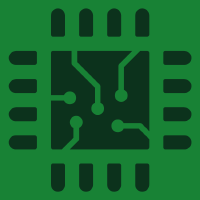Topic Menu
► Topic MenuTopic Editors





Applied System on Biomedical Engineering, Healthcare and Sustainability 2023
Topic Information
Dear Colleagues,
Recently, healthcare is undergoing a sector-wide transformation thanks to advances in computing, networking technologies, big data, and artificial intelligence. Healthcare is not only changing from reactive and hospital-centered to preventive and personalized, but is also changing from disease focused to well-being-centered (https://www.ecbios.asia/). Healthcare systems, as well as fundamental medicine research, are becoming smarter and utilizing biomedical engineering. Furthermore, with cutting edge sensors and computer technologies, healthcare delivery could also yield better efficiency, higher quality, and lower cost. However, these innovations often do not lead to sustainability, health, and happiness for all people. Science and technology are to be complemented by the arts, humanities, social sciences, and indigenous know-how and wisdom in order to increase the accessibility of the benefits for the needy across all regions and classes of people. We need ethically aligned and driven health care systems and sustainability. This topic “Applied System on Biomedical Engineering, Healthcare and Sustainability 2023” includes five journals, Journal of Clinical Medicine, Applied Sciences, Electronics, Bioengineering, and Healthcare, which aim to publish excellent papers about relative fields. This enables an interdisciplinary collaboration between science and engineering technologists in the academic and industrial fields, as well as internaional networking.
Topics of interest include the following:
- Smart healthcare system analysis and design;
- Computer and human–machine interactions in the healthcare system;
- Application of Internet of Things (IoT) in the healthcare system;
- Big-data- and artificial-intelligence-enabled healthcare systems;
- Health-related aspects of sustainability;
- Environmental education and public health;
- Environmental engineering and biotechnology rehabilitation medicine and physiotherapy;
- Sports medicine;
- Pediatric and geriatric emergency care;
- Leisure and recreation;
- Health promotion;
- Nourishment and health care;
- Disaster and health;
- Health and the environment;
- Health services;
- Occupational health;
- Impact of safety, security and disaster management on sustainability;
- Sustainability science;
- Medical electronics;
- Biomedical materials;
- Biomedical diagnostic techniques;
- Medical information and rehabilitation technology;
- Other related topics regarding healthcare, sustainability and biomedical engineering.
Prof. Dr. Teen-Hang Meen
Prof. Dr. Chun-Yen Chang
Prof. Dr. Charles Tijus
Prof. Dr. Po-Lei Lee
Prof. Dr. Kuei-Shu Hsu
Topic Editors
Keywords
- human–machine interactions
- Internet of Things (IoT)
- public health
- biotechnology rehabilitation medicine
- sports medicine
- pediatric and geriatric emergency care
- leisure and recreation
- health promotion
- disaster and health
- health services
- medical electronics
- biomedical engineering
- biomedical engineering
- sustainability
- smart healthcare system
Participating Journals
| Journal Name | Impact Factor | CiteScore | Launched Year | First Decision (median) | APC |
|---|---|---|---|---|---|

Applied Sciences
|
2.7 | 4.5 | 2011 | 16.9 Days | CHF 2400 |

Bioengineering
|
4.6 | 4.2 | 2014 | 17.7 Days | CHF 2700 |

Electronics
|
2.9 | 4.7 | 2012 | 15.6 Days | CHF 2400 |

Healthcare
|
2.8 | 2.7 | 2013 | 19.5 Days | CHF 2700 |

Journal of Clinical Medicine
|
3.9 | 5.4 | 2012 | 17.9 Days | CHF 2600 |

Chips
|
- | - | 2022 | 15.0 days * | CHF 1000 |
* Median value for all MDPI journals in the second half of 2023.

MDPI Topics is cooperating with Preprints.org and has built a direct connection between MDPI journals and Preprints.org. Authors are encouraged to enjoy the benefits by posting a preprint at Preprints.org prior to publication:
- Immediately share your ideas ahead of publication and establish your research priority;
- Protect your idea from being stolen with this time-stamped preprint article;
- Enhance the exposure and impact of your research;
- Receive feedback from your peers in advance;
- Have it indexed in Web of Science (Preprint Citation Index), Google Scholar, Crossref, SHARE, PrePubMed, Scilit and Europe PMC.

